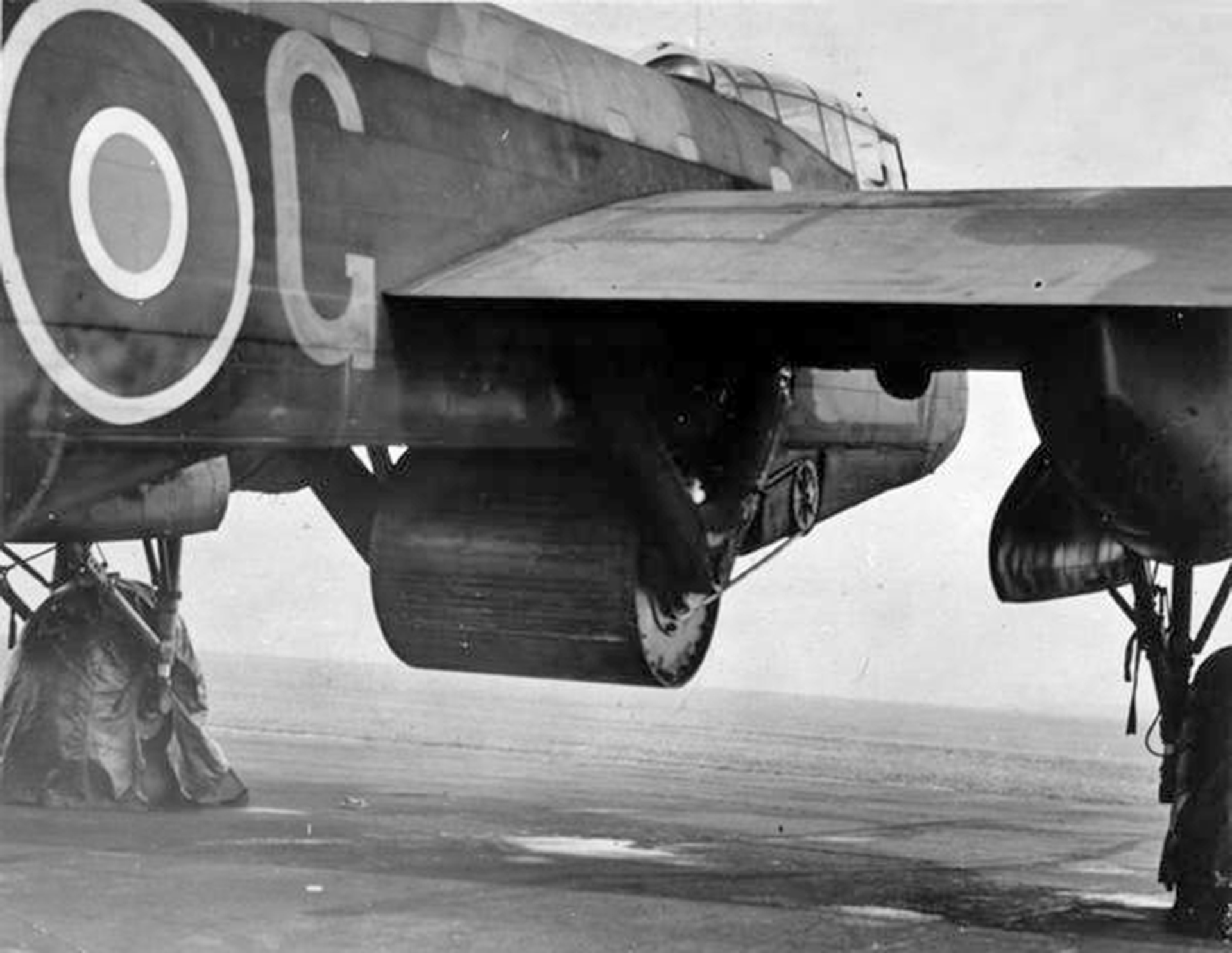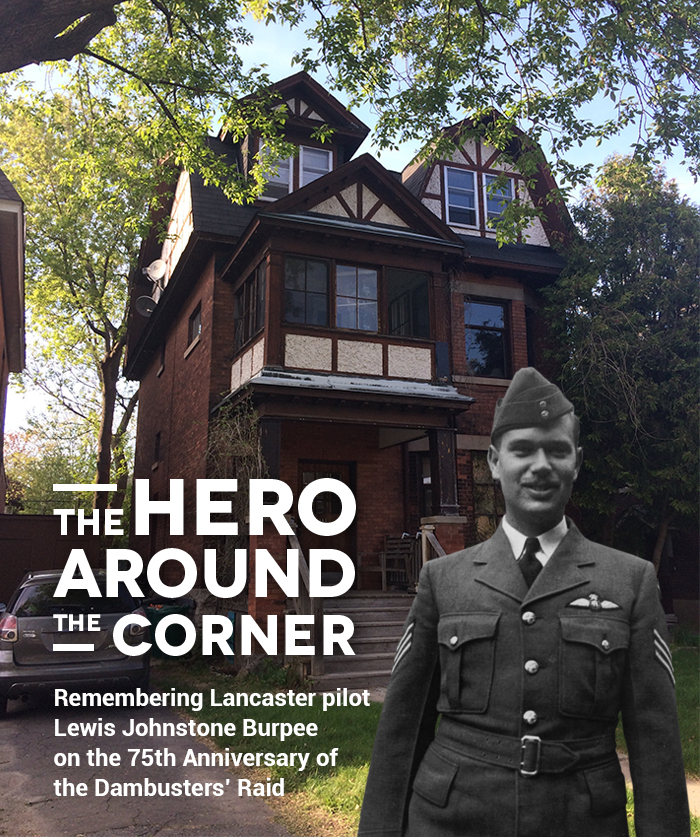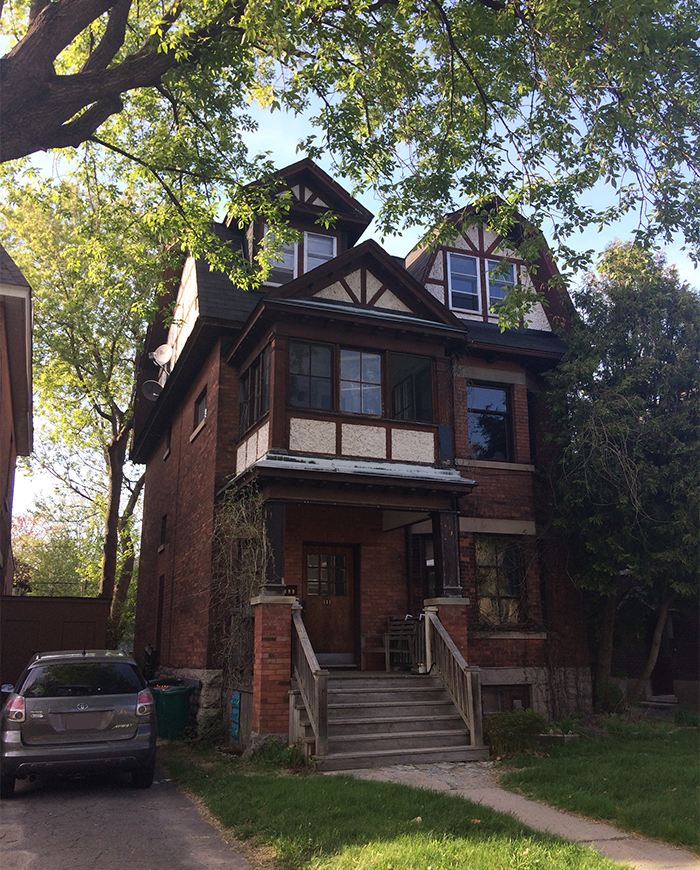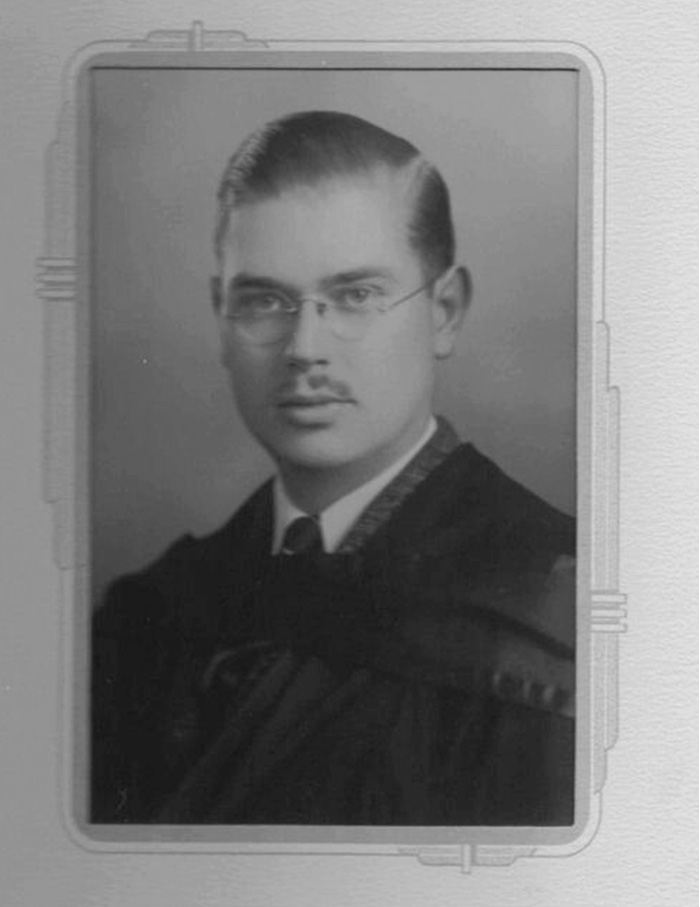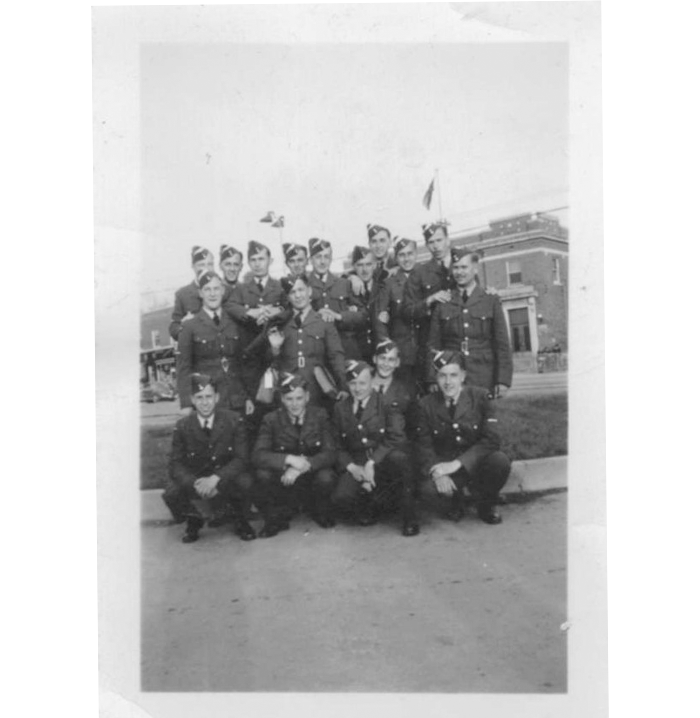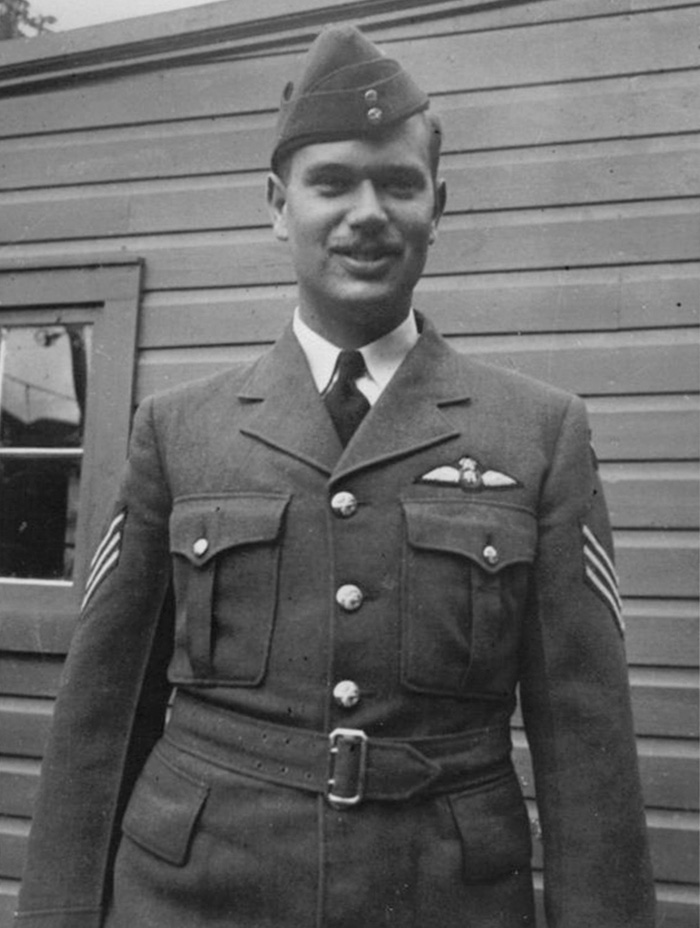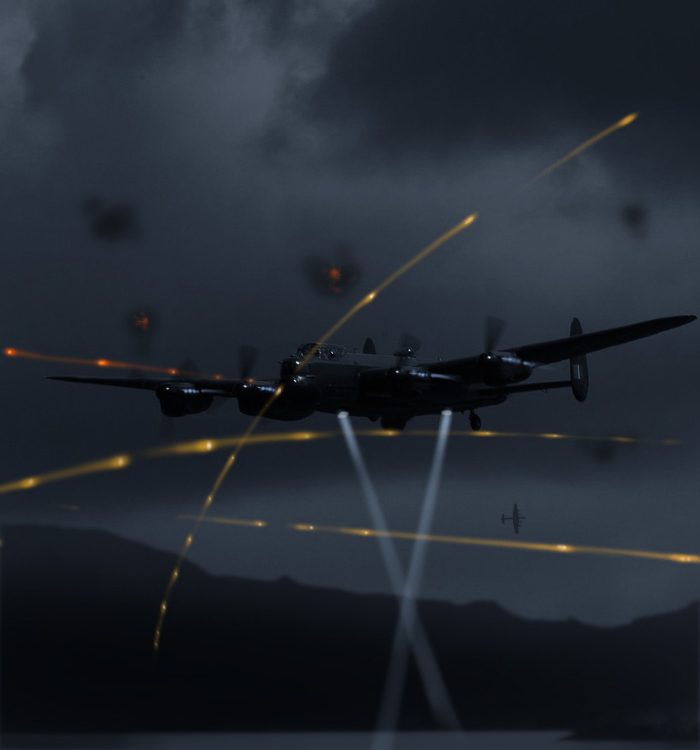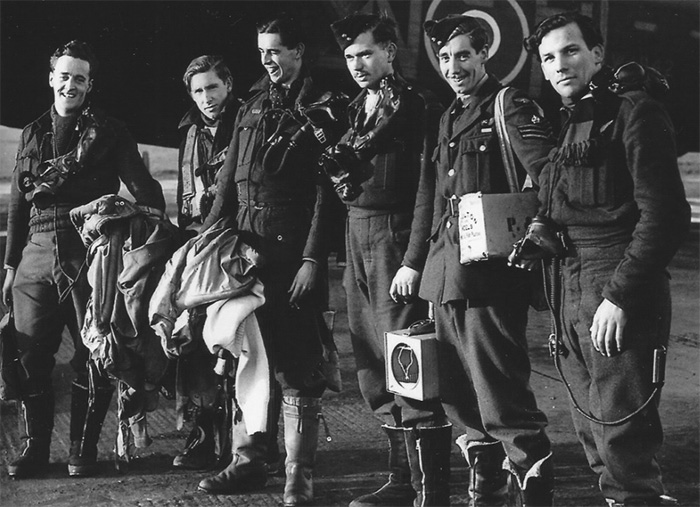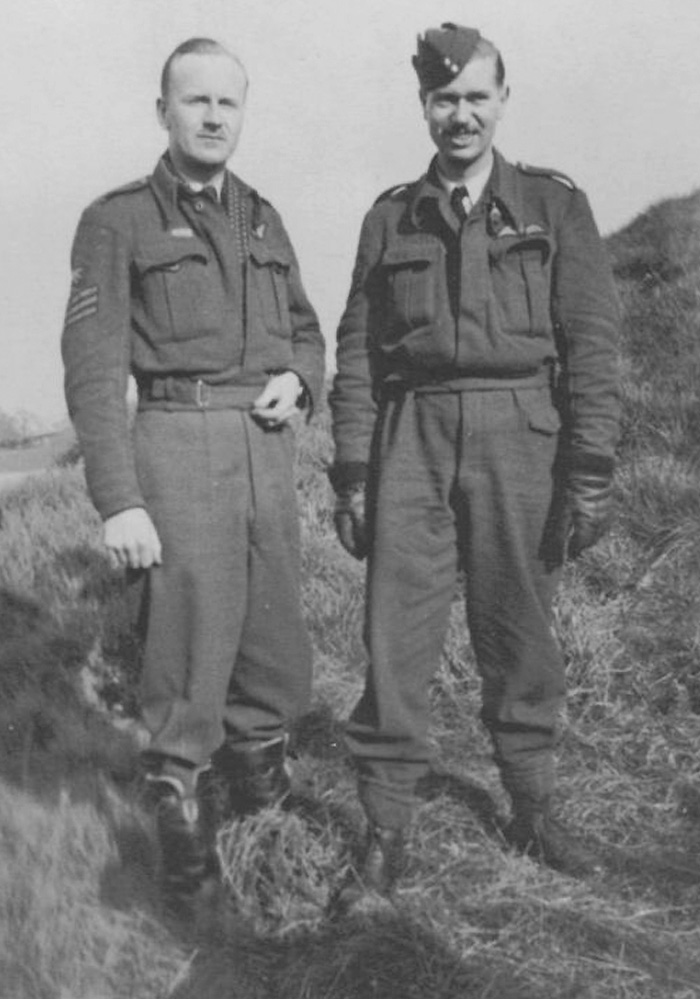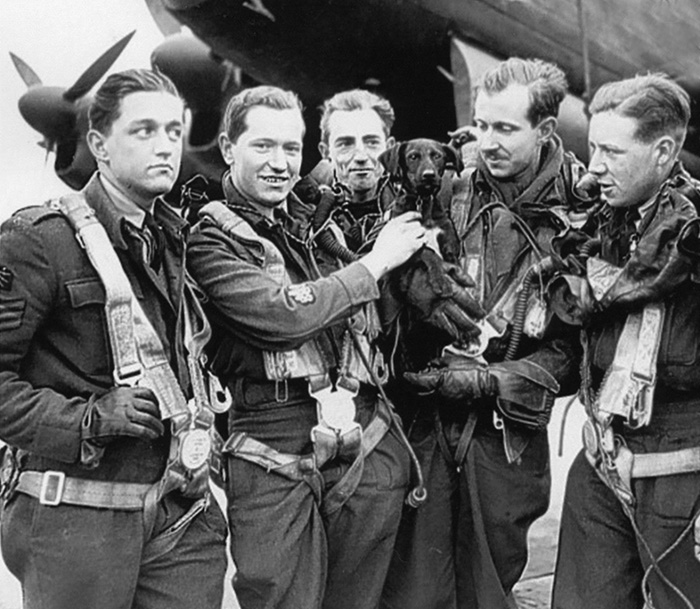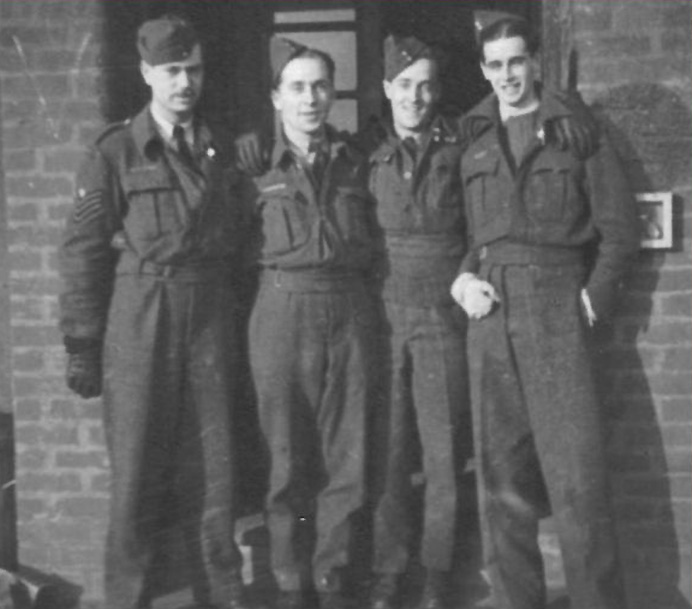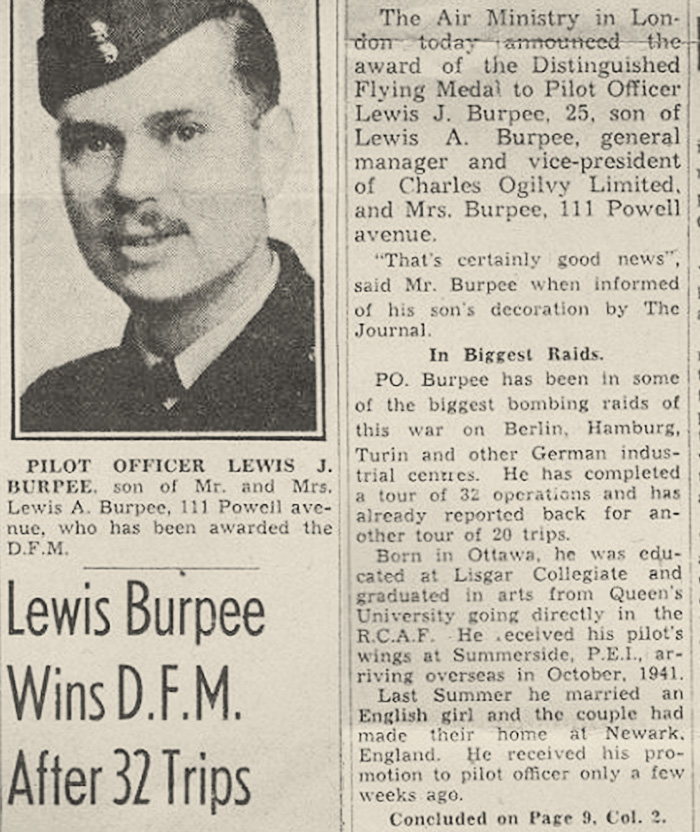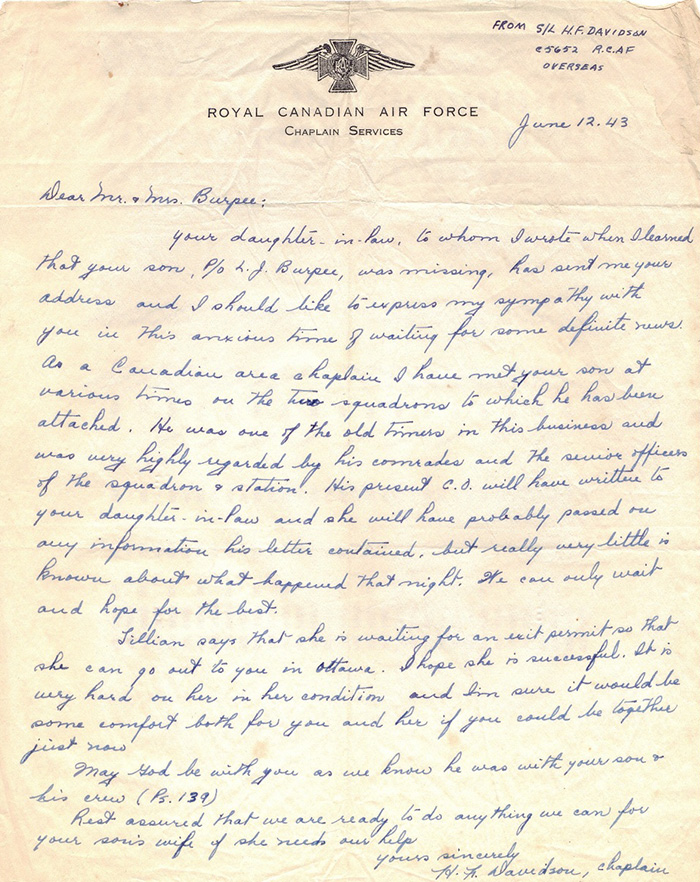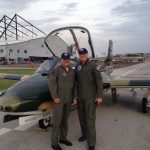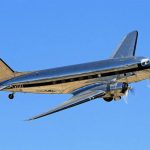Here in the USA, as we prepare to celebrate the 75th anniversary tomorrow for the crew of B-17 Flying Fortress Memphis Belle completing their 25th and final mission together, we may forget that another major milestone took place in the skies over Europe that same day. On the evening of May 16th/17th 1943, the men and machines of the Royal Air Force’s 617 Squadron thundered low over Holland into the German heartland to breach the dams supplying hydroelectric power to many regional weapons factories. Under intense anti-aircraft fire, 617 Squadron’s heavily modified Avro Lancasters swooped down over the man-made lakes behind each of three different dams to release their ingenious “bouncing bombs”. These weapon, when dropped at the perfect speed, altitude and position, would place an explosive charge at a critical depth in close proximity to the dam’s structure. The pressure waves from successive bombs was enough to burst two of the three targets they hit, and despite the loss of nearly half of their aircraft and crews, 617 Squadron’s heroic actions burned an indelible mark on the history of the Royal Air Force. The squadron’s aircrew came from nation’s spanning the globe, from Great Britain to Canada, Australia, New Zealand and even the USA. One of these brave men was a Canadian named Lewis Johnstone Burpee… and we thought our readers would like to read his story, told ever so eloquently by our great friend at Vintage Wings of Canada, Dave O’Malley, who lives today just around the corner from Burpee’s family home in Ottawa, Ontario….
The Hero Around the Corner: Remembering Lancaster Pilot Lewis Johnstone Burpee on the 75th Anniversary of the Dambusters Raid
By Dave O’Malley
It’s springtime in the Glebe. May 14th to be exact. The sun shines with a new intensity. The breeze billows through the screen window of my office, wafting paper across my desk. It was a particularly tough winter but the pain of it is soothed by a fine evening. Tonight is one of those evenings in which it is very good to be alive.
My office is on the second floor of a small building at the corner of Third Avenue and Bank Street in an area of Ottawa known as the Glebe. Bank is what you would call the high street in England, the main street in North America. It draws down from the north near the Parliament Buildings and continues on uninterrupted until almost the St. Lawrence River, 60 miles to the south.
I suspect that Bank in the Glebe is much the same as it was 75 years ago in May of 1943—save for the nature of the businesses, the highfalutin quality of our new-age restaurants and their fancy outdoor terraces and the style of the automobiles. Today, pricey Glebe housing means that the people of the Glebe are uniformly in a higher income bracket, but in ‘43, the Glebe had three distinct layers—the wealthy, the middle class and the working class. I have lived in the Glebe now for 46 years, all of that time in former working-class neighbourhoods. It has been a very happy and welcoming community. A very close-knit one.
Over the past decade, researching and publishing stories about Canada’s aviation heritage, I have come across a few that have intersected with the small community I know so well and love so much. It’s not that I have gone looking for stories of men in my neighbourhood, they just arrive at my doorstep so to speak. These young men are just a fraction of the men and women from the Glebe who served during the war, yet in the small sampling of six airmen that I know of, one was a Battle of Britain fighter pilot and Great Escaper, one was at the Siege of Malta, and one was a Dambuster. It is a testament to the pivotal nature and the emotional power of these four events, that major motion pictures were made of them— Malta Story (1953), The Dam Busters (1955), The Great Escape (1963), and Battle of Britain (1969).
Directly across from my home on Adelaide Street (about three blocks from my office) lived a young man named James Wilson, a Bristol Beaufighter pilot. He disappeared with his navigator on an anti-shipping operation in November of 1942. He has no known grave. A few doors down Adelaide, at number 21, lived Wilson’s cousin, a young man named Harold Healey. He too died on Bomber Command operations with 207 Squadron, RAF on April 9, 1943. Still further down the street, a 21-year old Warrant Officer and Spitfire pilot by the name of Ken Dale was lost in late 1944 on operations with 249 Squadron—the same squadron that included such fighter pilot luminaries as Flight Lieutenant George “Screwball” Beurling, Wing Commander Percy “Laddie” Lucas, and Squadron leader Robert “Buck” McNair.
Five blocks north of my office, just to the east of Bank Street on Patterson Avenue, is the former home of Flying Officer “Skeets” Ogilvie, a Battle of Britain hero and the last man to escape from the tunnel known as Harry in the Great Escape. Four blocks beyond that, on Queen Elizabeth Drive stands the home of a bright young man by the name of David Francis Gaston Rouleau, a Spitfire pilot who flew from the deck of HMS Eagle in an attempt make it to Malta. After a 400-mile flight, Rouleau was attacked and shot down just a few kilometers from that tiny besieged island. He too has no known grave.
If you live in a neighbourhood that was built before the war, there are the ghosts of young men around you— the phantoms of boys who grew up on your street or around the corner. Who went away and would never come home. Adelaide Street is only one block long, but in 1943 and ’44, grief must have hung black and heavy over her rooftops. Fear also lived here. The fear of families whose boys and girls were fighting in some theatre of war somewhere. The constant gnawing dread of families who prayed that the telegram boy would cycle past to some other door.
This evening, I paid a short walk-by visit to the former home another young man from the Glebe whose life held great promise before the war took everything from him and his family. The young man’s family has long since moved away, but the memory of their loss will forever dwell in this house, recognized or not. The house is on a wide shady avenue in the most well-to-do area of the Glebe. The family was one of means. The young man’s life was one of privilege and opportunity. His name was Lewis Johnstone Burpee.
Lewis Johnstone Burpee was one of just 19 Avro Lancaster pilots of 617 Squadron who took part in one of the most daring and technically complicated bomber raids of the war—Operation Chastise, or as we all have come to know it, the Dambuster Raid.
In the seventy-five years since the night of 16–17 May 1943—the night of Operation Chastise—the events that transpired on that moonlit spring night have been made into feature films, documentaries, novels, non-fiction books, magazine articles, dramatic paintings, computer games, marches and comic books. For all of you who read this, there is not much one can say to add to the reportage of this stunning attack deep inside Germany on targets long thought to be unassailable.
On that dark night, lit only by the moon, 133 very young men of 617 Squadron took off in 19 specially modified Avro Lancaster bombers, formed up and flew extremely low over the English Channel across the Dutch coast. Having trained for months to deliver a very special weapon, the young men were headed for a date with destiny. The aircraft were to fly low, beneath radar coverage, navigate deep into Germany, locate and attack a series of massive dams on tributaries of the Ruhr River. Behind each of these dams, the Möhne Dam, the Sorpe Dam, the Eder Dam and the Ennepe Dam, were massive reservoirs of water which, it was hoped, would flood factory sites downstream and bring much of Germany’s industrial production to a standstill. The dangers of flying low over heavily-defended German occupied Europe at night meant that not all of them would make it to their targets.
The attacks would be carried out using a special explosive device which, when released from a Lancaster bomber at exactly 60 ft AGL, at exactly 240 mph and at a specific distance from the reservoir-side face of the dam, would fall to the water and then bounce like a skipping stone, in decreasing bounces, until it fell exactly at the face of the dam. The bombs would then sink down the face of the dam to a specific depth where a hydrostatic sensor would detonate the bomb like a depth charge. And like a depth charge, the bomb would use the power of compressed water to deliver a devastating blow deep beneath the surface, weakening the dam’s structural integrity. The massive weight of the stored water would then breach the weakened dam wall and roar down the valleys, flooding industrial complexes downstream.
The squadron was made up of hand-picked crews under the leadership of the charismatic 24-year-old Wing Commander Guy Gibson, a veteran of over 170 bombing and night-fighter missions. These crews included RAF personnel of several different nationalities, as well as members of the Royal Australian Air Force (RAAF), Royal Canadian Air Force (RCAF) and Royal New Zealand Air Force (RNZAF), who were frequently attached to RAF squadrons under the British Commonwealth Air Training Plan. The squadron was based at RAF Scampton, about 5 mi (8 km) north of Lincoln. Most of the crews found their targets and, facing heavy flak and cannon fire from the dams’ batteries of anti-aircraft guns, they pressed home their attack, with only the moon to guide them.
Pilot Officer Lewis Burpee, DFM was the commander of Lancaster “S” Sugar (AJ-S, ED865), assigned to the final wave of five Lancasters, which was to fill in as a mobile reserve in the event of losses or failure to breach the dams. Burpee took off a little after midnight on the 17th and headed across the North Sea towards Holland. While over Holland, near the Luftwaffe airfields at Eindhoven and Gilze-Rijen, his Lancaster came under heavy anti-aircraft fire and was caught by searchlights. It is not known for certain that he was hit by flak or whether he struck the ground trying to get under the blinding searchlight beams. Regardless, Burpee’s Lancaster hit the ground near the perimeter of Gilze-Rijen airfield. His “bouncing bomb” payload, code-named Upkeep, exploded on contact.
Only three of the bodies of “S” Sugar’s crew were ever identified—Burpee’s, and the two other Canadians in his crew, rear gunner Gordie Brady and wireless operator Leo Weller. The remains of the others would be buried in a mass grave—Flight Engineer Guy Pegler, Navigator Thomas Jaye, Bomb Aimer Jim Arthur and Air Gunner William Long.
When the last Lancaster touched down at RAF Scampton on the morning of May 17, 617 Squadron assessed its losses and its successes. Both were considerable. Of the 19-participating aircraft, 8 were shot down including Burpee’s. Of the 133 men involved, 53 were killed. Of the 53 killed, 15 were Canadian. Of the 15 Canadians, one was from the Glebe. Two of the target dams were breached and one damaged. There was one Victoria Cross (Gibson), as well as five Distinguished Service Orders, 10 Distinguished Flying Crosses and four bars, two Conspicuous Gallantry Medals, and eleven Distinguished Flying Medals and one bar given out for service on that one night alone. 53 missing-in-action telegrams were later sent to families from New Zealand to Canada. One came to 111 Powell Avenue. None of those missing-in-action telegrams was ever followed up with news of survival.
The telegraphed news of the raid made it to the home towns of all of the crews before the telegrams did. That very night, the Ottawa Evening Journal carried a front page story about the raids. In a tragic coincidence, also carried a story about Burpee’s award of a DFM and his marriage to an English girl. The piece on Burpee began with “The Air Ministry on London today announced the award of the Distinguished Flying Medal to Pilot Officer Lewis J. Burpee, 25, son of Lewis A. Burpee, general manager and vice-president of Charles Ogilvy Limited, and Mrs. Burpee, 111 Powell. “That’s certainly good news” said Mr. Burpee when informed of his son’s decoration by the Journal.” For a day or so, the Burpee family felt comforted with the knowledge that Lewis was safe in England, happily married and highly experienced. Given the secrecy of the raid, it is doubtful that they had any idea their son was part of the historic event. That would change the next day.
Burpee’s wife Lillian wrote to his parents’ family, asking to join them in Ottawa for the birth of their grandchild. She sought an exit permit to travel by ship to Ottawa, where she lived with the Burpees until the birth of Lewis Johnstone Burpee Jr. on Christmas eve, 1943. There was no doubt great sadness at 111 Powell that Christmas day, but it would be tempered by the bittersweet arrival of the baby.
It has been 75 years since handsome Lewis Burpee, son of a respected Ottawa business man and Glebe native, died in Holland. His son would grow up in his family home until his mother remarried in 1951, becoming Mrs. C. Elliot Kerr. The love that was felt by Lewis’ parents for their daughter-in-law was demonstrated at her wedding when she was “given in marriage” by Lewis Burpee’s father. In another coincidence, the Lillian Elliot’s new home was near the corner of O’Connor and Lewis Streets. I’m sure, despite her happiness, she thought of her brave first husband every time she looked up at that street sign.
As I finish up this story, it’s May 16, I hear the bustle of Bank Street through my open window—the voices of men and women at the Starbucks patio below me, the happy shrieks of young girls leaving the dance academy across the street, the footsteps of Eric my postman coming up the stairs — all living a charmed life here in the Glebe. 75 years ago this very day, young Lewis Burpee walked towards the black outline of a Lancaster in the heavy gloom of a Lincolnshire night. The terrible stress of the upcoming mission lay like a crushing weight on his shoulders, heavier now that Lillian announced she was pregnant.
The sad truth is, he would never see another sunrise again. Nor the shady elm-shaded streets of the Glebe.
But his son would.
Dave O’Malley
We at WarbirdsNews wish to thank Dave O’Malley for his permission to republish this article, and encourage our readers to sign up to the Vintage Wings of Canada e-mail list, where you can read more of his marvelous historical narratives, and those of other contributors… [email protected]







